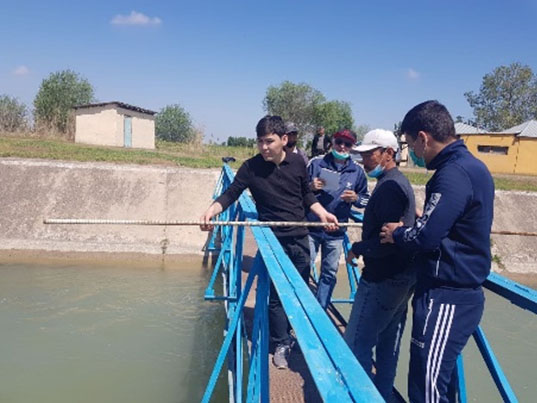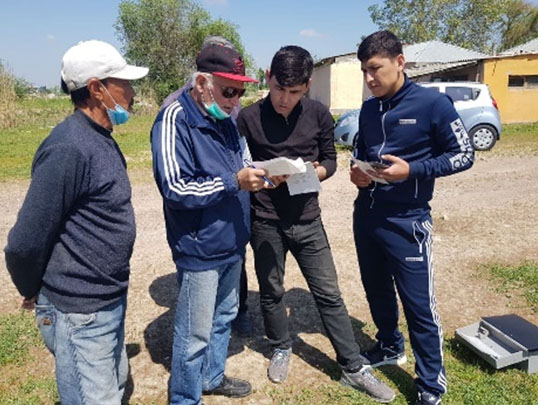SCIENTIFIC AND TECHNICAL ASSISTANCE AND ADVISORY SUPPORT TO “—“ CLUSTER FROM THE SIDE OF SIC ICWC
Uzbekistan is in search for new forms of organization of agricultural production and water management. A foreign enterprise in the format of limited liability company - Tashkent Cotton Textile Cluster (“—“ cluster) was established in the Lower Chirchik district of Tashkent province. The Cluster has got under control much of irrigated land in the district.
In line with the Agreement on public-private partnership between “—“ cluster and the Uzbek Ministry of Water Management, the district irrigation division of the Lower Chirchik district was included in the structure of “—“ cluster.
Hence, “—“ cluster has got the functions that before were fulfilled by the state (district irrigation division) and the community (district water consumer association). It is hoped that clusters as a whole and “—“ cluster in particular could drive enhanced development of the water sector since the former are interested in better water management and can mobilize investments in the sector.
The water-related situation in the Lower Chirchik district is not simple: deteriorated infrastructure, poor water accounting. Moreover, remaining farms do not know with whom to conclude contracts for water delivery Ė with “—“ cluster or ďdistrictĒ water consumer association.
These circumstances and a new water tax in Uzbekistan along with dry periods make “—“ cluster to search for ways to improve water accounting, delivery and use.
In this context, by request of “—“ cluster, SIC ICWC started working in the three areas:
- Improvement of water management.
- Organization of water accounting to control how water is distributed in fact.
- Development of a water use plan and putting it into practice.
The aim is improving water management in the district. The tasks were:
- To establish and organize operation of a water governance body in the form of Water-Land Commission.
- Develop an integrated water resources management (IWRM) plan for the district.
The idea from which “—“ cluster and SIC ICWC proceed is that the development of the cluster and water, food, and environmental security in the district depend on quality of water management, which can be improved through implementation of IWRM.
Since water managers are to ensure stability and efficiency and also equitability of water delivery, it is critical to involve key stakeholders (the community) in making decisions on water governance.
The central to IWRM is the principle of public participation, which aimed at equitability of water distribution and to be ensured through institutional tools.
To this end, it is planned to mobilize the public through the establishment of a water-land commission.
Benefits from implementation of IWRM increase if key stakeholders of the district are involved in the development of IWRM plan from the very beginning.
The IWRM plan of the district will include several stages and a number of efforts on 1) assessment of water, land and human resources, 2) assessment of water demand and water structuresí capacities; 3) formulation of vision; 4) development of strategy scenarios and selection of the best strategy.
Experts from SIC ICWC started field observations over technical conditions of head gauging stations along main and secondary canals. These included visual estimation of conditions of head gauging stations, availability of measuring platforms and gauging rods, zero setting, and coating of intake channels. Three main canals (RK-8, RK -9 and RK -10) were inspected, including gauging stations along secondary canals. In total, 73 gauging stations were inspected.

Measuring depth

Calculation of flow rate
N. Mirzaev, R. Masumov
|